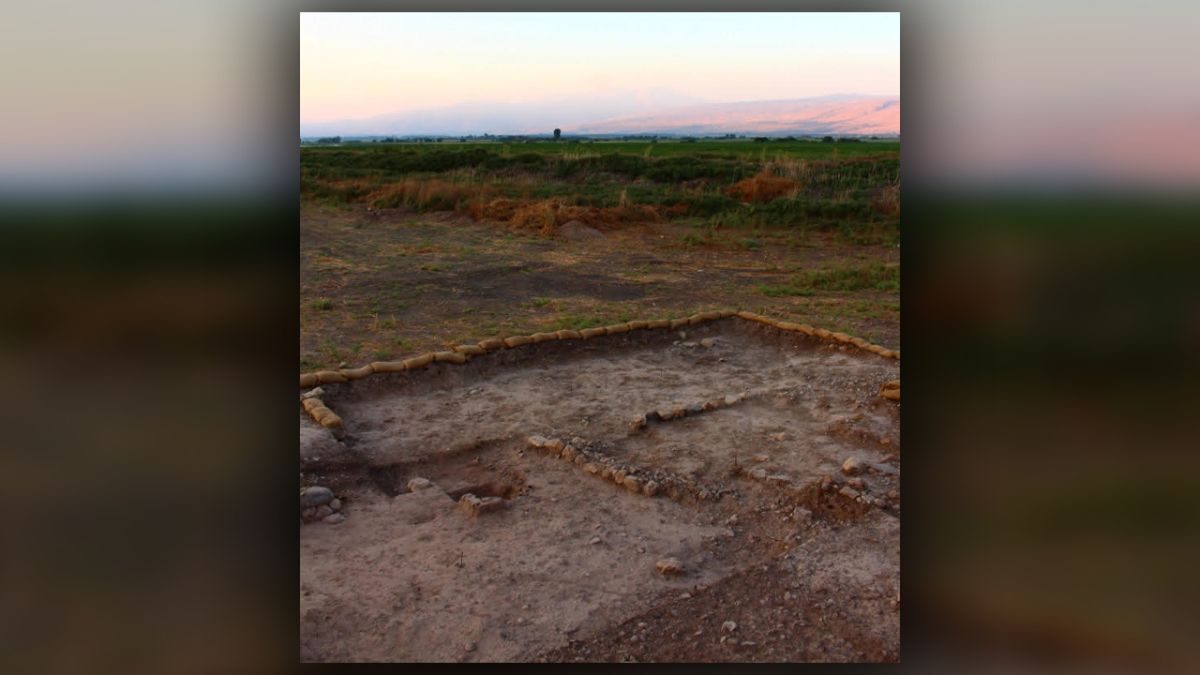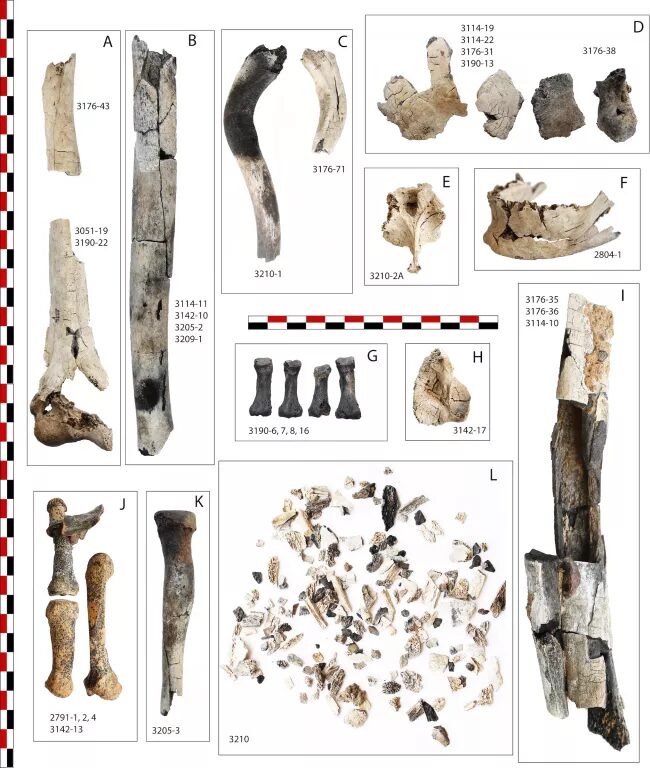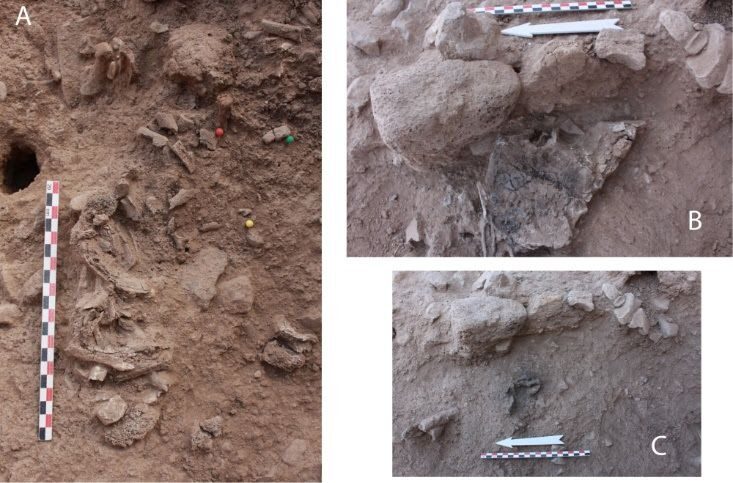
The body wasn't simply thrown in a fire, however; whoever arranged the funeral pyre did so with care, archaeologists found by sifting through the body's burnt remains. It appears that the deceased was placed in a seated position, with their knees bent to their chest in a kiln-like pit. Then, a fire was ignited next to or under the deceased.
Until now, the earliest known cremation in the Near East dated to the sixth millennium B.C. Meanwhile, the oldest known human cremation in the world — the so-called "Mungo Lady," whose burned remains were found near Lake Mungo in New South Wales, Australia in 1969 — is much older, dating to about 40,000 years ago, according to a 2003 study in the journal Nature.
Researchers discovered the extraordinary burial in 2013, while excavating the Neolithic (the last age of the Stone Age) village of Beisamoun, in the Upper Jordan Valley of northern Israel. The burial pit contained 355 bone fragments, many of which were scorched, said study lead researcher Fanny Bocquentin, an archaeo-anthropologist at the French National Center for Scientific Research (CNRS).
The cremated individual was a young adult, but their sex and height remain a mystery (the remaining bones were too damaged to tell, Bocquentin said). Even so, an analysis of the bones revealed that this person had survived a ghastly injury; the researchers found a 0.5-inch-long (1.2 centimeters) flint projectile point embedded in the left shoulder bone — an injury that likely tore the muscle and likely caused "severe pain but not necessarily impaired function," the researchers wrote in the study.
The bone had started to heal, indicating that the individual survived the injury for at least several weeks or months, but then "died of something else, we don't know what," Bocquentin told Live Science.
Radiocarbon dating of the fibula (the lower leg bone) revealed that the person lived sometime between 7031 B.C. and 6700 B.C., during the Pre-Pottery Neolithic C culture. That means the deceased lived amongst early farmers who had domesticated certain cereals and animals, but who hadn't yet figured out how to create pottery. (That technology emerged in the South Levant, the southern land east of the Mediterranean, in the sixth millennium B.C., Bocquentin said.)

The U-shaped grave itself is small, just 32 inches in diameter and 24 inches deep (80 by 60 cm). It was lined with reddish mud plaster that these Neolithic people used to make bricks for their houses. So, it appears that the burial pit was designed to function as a kiln, the researchers wrote in the study.
Once the "kiln" was complete, the deceased's body was placed in a seated position in the grave, with their upper body leaning against the southern wall. It's possible that the body was placed on a pallet above the pyre, Bocquentin noted, as the bottom of the pit doesn't show signs of burning, likely because the fire wasn't very hot at its base. The walls of the grave, however, were scorched, which makes sense because the fire would have been hotter higher up, where there was more oxygen to fuel it, the researchers wrote in the study.
After the fire started, it appears that the upper body fell forward and rotated.
As bone burns, its chemical composition changes. To determine how hot the fire was, the researchers used Fourier-transform infrared spectroscopy (FTIR), a technique that directs infrared radiation at a sample — in this case, several bone fragments and a tooth from the grave — to detect unique molecular fingerprints. These fingerprints revealed that the person's body had been heated to temperatures reaching at least 1,300 degrees Fahrenheit (700 degrees Celsius), the researchers found. That's on par with modern cremation incinerators, which are typically preheated to about 1,100 F (593 C) before a body is placed inside, according to HowStuffWorks.

The researchers also found high levels of plants known as sedges, "water-loving rushes that have spongy stems and are commonly used for basketry and matting," the researchers wrote in the study. Perhaps, the cremated individual was wrapped in a shroud of sedges, the team said. This practice has been identified as far back as the Natufian period (13,050 B.C. to 7,550 B.C. in the Levant) and is also seen in other Neolithic burials in the Levant, the researchers wrote.
In addition, the researchers found 776 fragments of animal remains in the cremation pit, which could have been used as fuel for the fire or grave offerings; they also may have been refuse in the village's dirt that just happened to become part of the grave. They identified 84 of the animal remains as belonging to: cattle, goats, gazelles, pigs, birds of prey and fish, the researchers said.
Elżbieta Jaskulska, a bioarchaeologist at the University of Warsaw in Poland, who specializes in cremated remains, and was not involved in the study, praised the researchers for their "comprehensiveness," saying the paper could serve as an example for bioarchaeological analyses of other ancient cremations.
As this discovery is "mostly a case study," more research is needed to illustrate "differences and similarities within the sites, cultures, regions and chronological periods," Jaskulska told Live Science in an email. "That will bring more understanding of what was happening in the past societies, the question at the core of every archaeological study."
Grave changes
So far, the researchers have unearthed 33 other ancient burials — including 18 adults, three youngsters and 12 infants — in Beisamoun dating to before and during the Pre-Pottery Neolithic C culture. There are many types of burials, including single and double graves, primary burials and even secondary burials, five of which contain "secondary" cremations of individuals whose remains were dried first and burnt later. The pyre-pit is the only known burial from the site that holds a corpse that was cremated while it was still "fresh," according to chemical analyses done by the researchers.
The pyre-pit cremation was likely a faster way to process the dead compared with the formerly lengthy burial practices of people in the South Levant.
"Here they are really reducing the time of the funerary customs," Bocquentin said.
Just 200 to 300 years after this particular burial, ancient people living in the South Levant no longer buried the dead inside or near villages, making it a challenge for archaeologists to find their remains. "We have very few graves from the six millenium [B.C.] in the South Levant," Bocquentin noted. Perhaps this happened because the living decided to invest less time in the dead, she said.
The study was done in conjunction with the French Ministry for Europe and Foreign Affairs and the Israel Antiquities Authority. It was published online today (Aug. 12) in the journal PLOS One.



Reader Comments
Roll over Roy Castle!!!! Tell Ross and Norris McWhirter the news!!!!